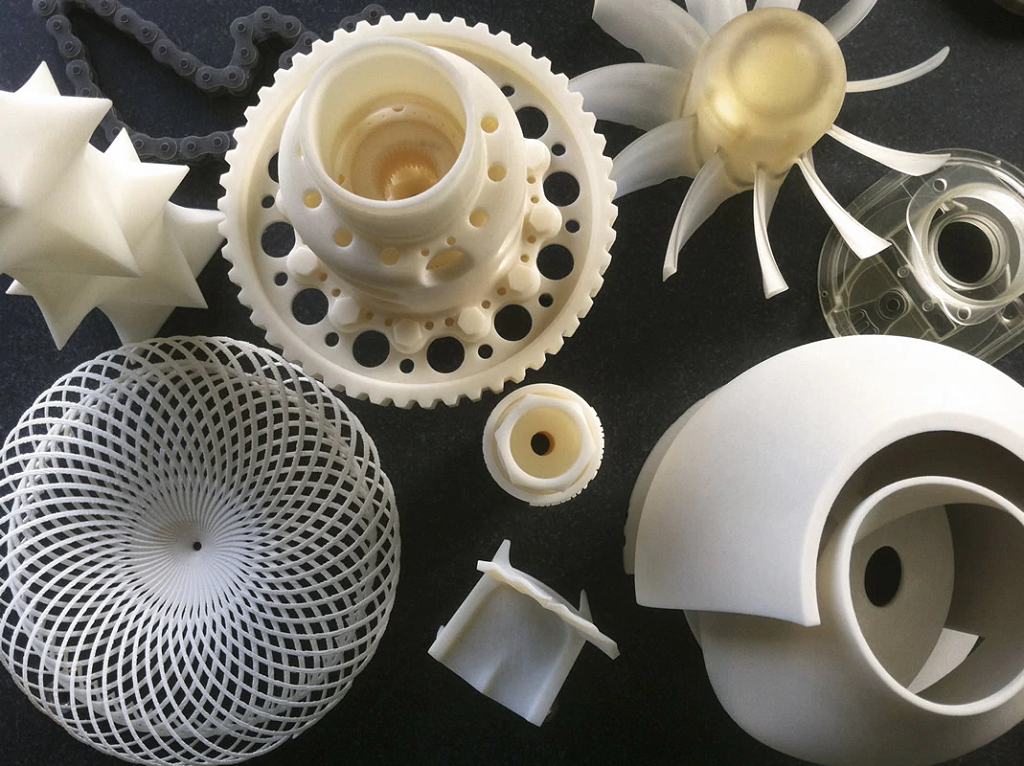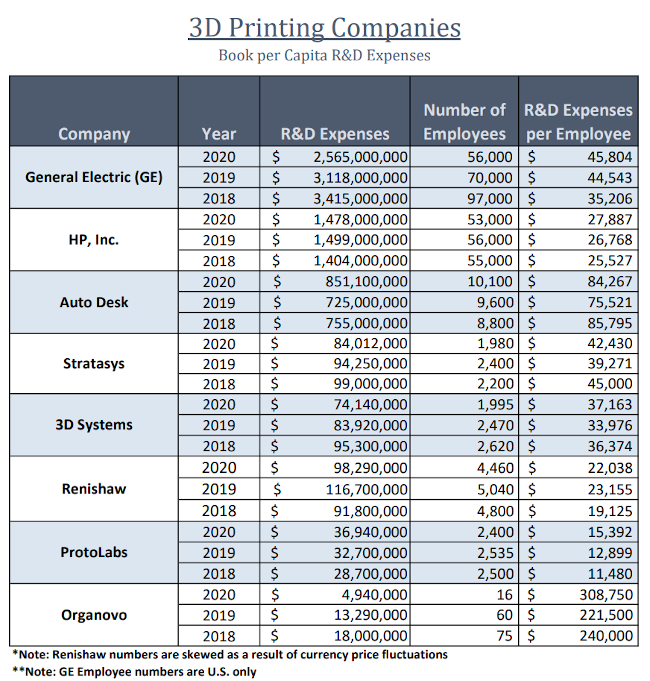
Charles R. Goulding and Ryan Donley analyze R&D expenditures of several leading companies in the 3D printing industry.
It is important to analyze the level of the R&D occurring at the leading 3D printer manufacturers to help understand just how quickly the industry is growing and why more companies are committing to the potential future of 3D printing. Compared to the prior year, several companies saw increases to their R&D expenses per employee.
In the year 2021, we expect all of the 3D printing companies will have a specific incremental boost in R&D as demand for additive manufacturing in industries such as automotive, healthcare, and aerospace and defense is increasing significantly.
A table providing the last three years per capita R&D for eight companies’ public reporting purposes is presented below:

Some conclusions from the four-company data for the pure-play 3D printers — Stratasys, 3D Systems, Protolabs (which also offers traditional manufacturing), and Organovo — are as follows:
- This is an industry with a large commitment to R&D with three-year average spending of $167 million for these four 3D printing-focused companies
- The pure 3D printer manufacturers are engineering/design-intensive since the average company per capita annual R&D spend is $50 million; this excludes GE and HP
- Significant percent change (29.1%) occurred compared to 2019 due to Organovo’s financials and Renishaw currency fluctuations (€ to USD)
- Organovo is an organ printing company, that again topped the R&D Expense Per Capita table due to their small employee numbers and millions spent on R&D Expenditures
- GE and HP Inc. are not 3D printing-specific, though they have committed large portions of R&D spending on 3D printing as the companies and continue to grow their capabilities in this realm. Their large numbers skew the overall data results
- The 3D printing market segment is expected to see significant growth over the forecast period of 2021 to 2027 with GlobalNewsWire projecting a 14.6% CAGR (compound annual growth rate) and another site, MordorIntelligence, forecasting a 29.48% CAGR from 2021-2026.
- After being private for several years, Desktop Metal, a specialty 3D printing systems company, went public in 2020. The company had R&D expenditures of $43.1 million and $54.7 million since publicly reporting. Desktop Metal also raised $438 million in venture funding from sources such as Google, BMW, and Ford
This table only reflects the R&D investment of large commercial 3D printer manufacturers. Other 3D printing or R&D investors include:
- Foreign, U.S. federal and local government
- Universities
- Software developers
- Material suppliers
- Designers and end-users
- Numerous privately-held 3D printer manufacturers, many of which have large R&D budgets, including Markforged (which is set to go public this year) and Carbon
3D printing is accelerating quickly as more large players are entering the market with their own technology or investing in the sector. The propelled popularity of 3D printing is leading to more economical production processes across numerous large industries.
